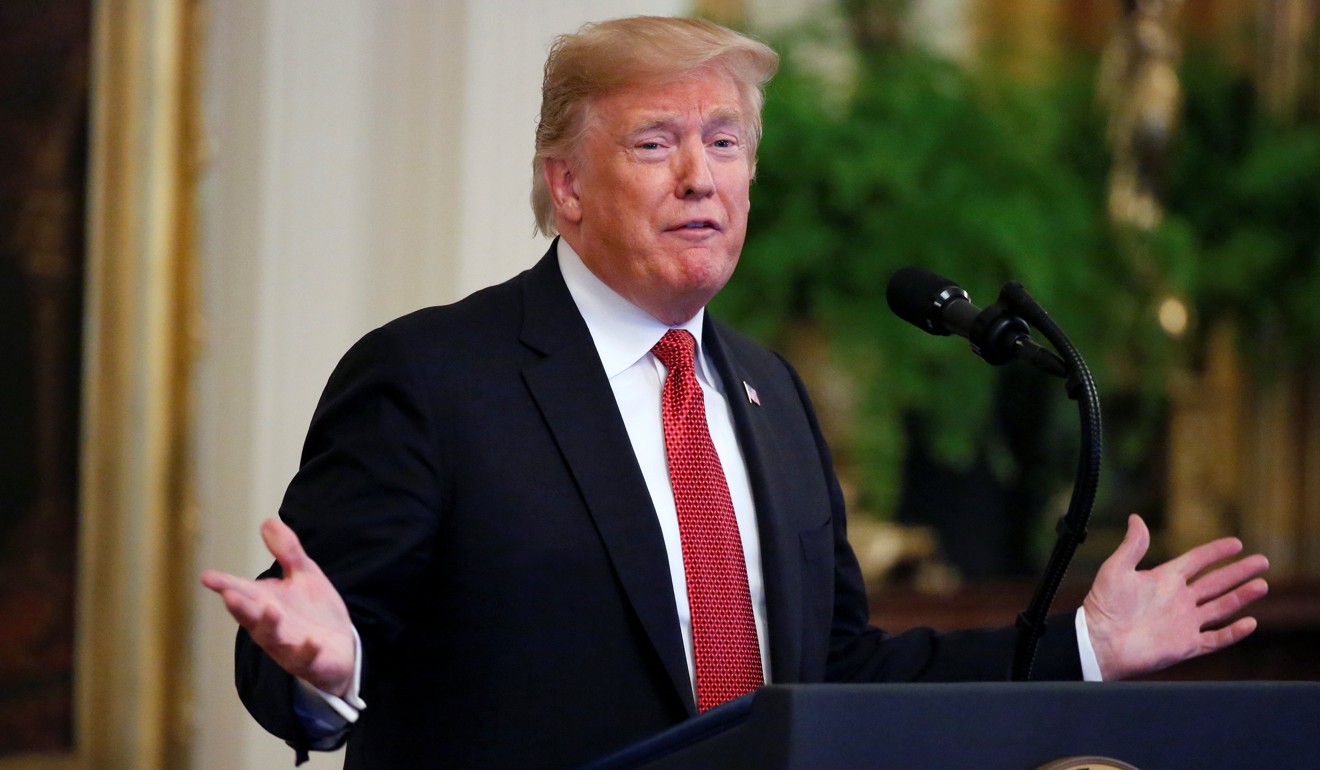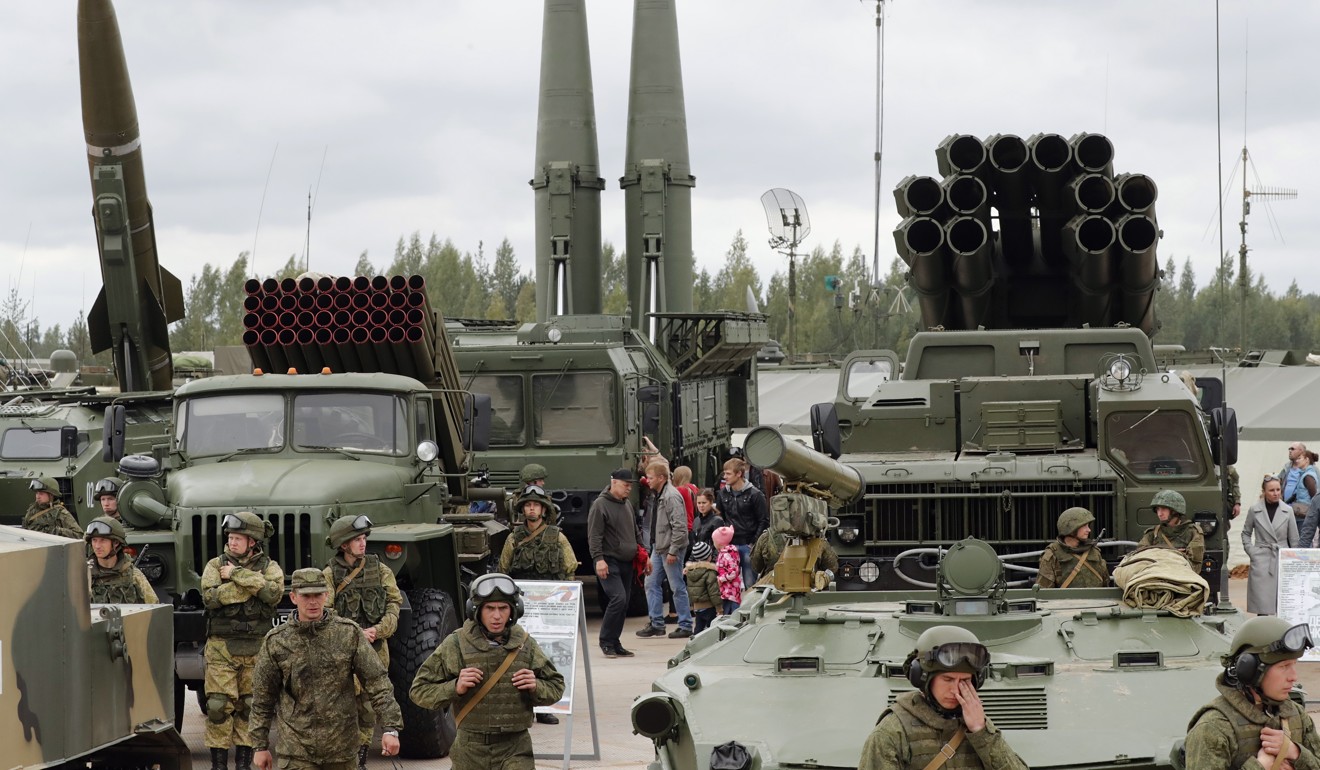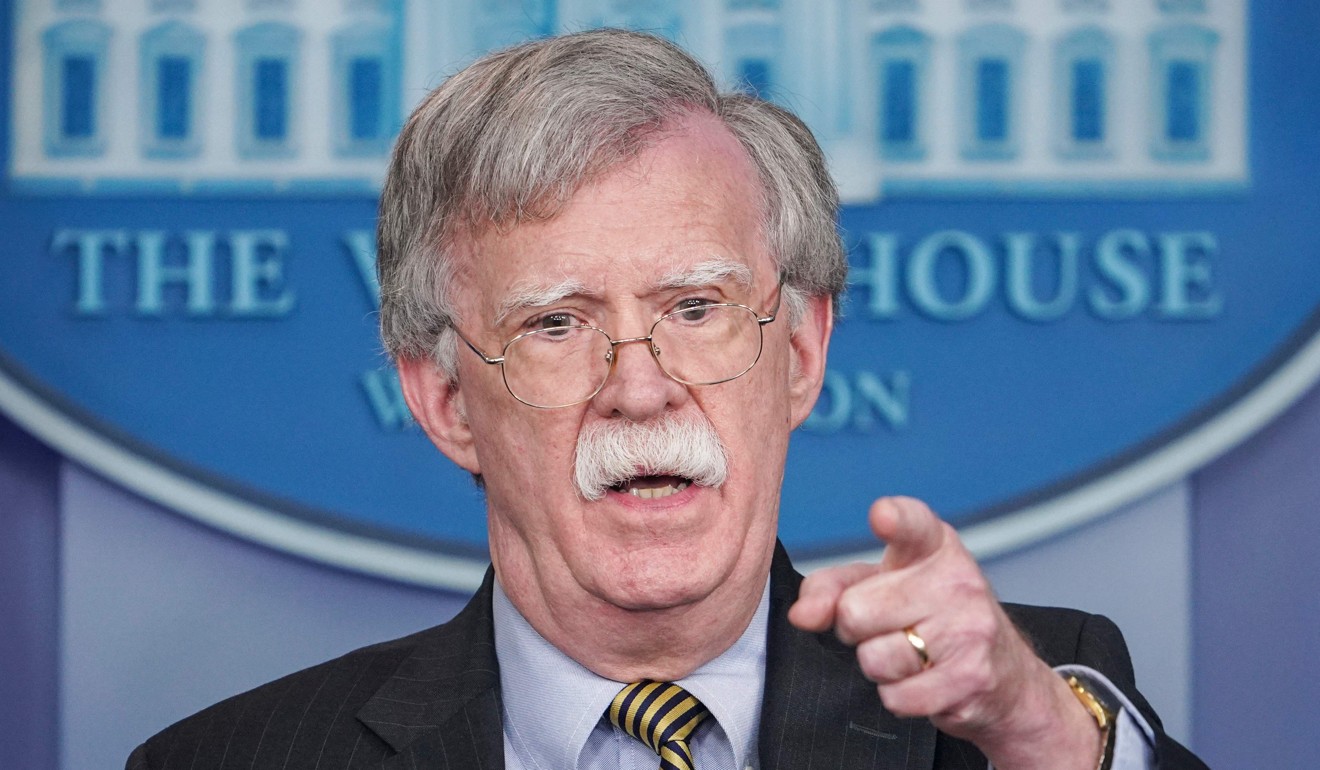
If Trump blows up US-Russia nuclear treaty, China will pick up the pieces
- Withdrawal from INF deal brings prospect of US missile deployments in the Asia-Pacific, threatening China’s security
- But it may also hand Beijing a key role in building new world order of arms control
What Asia thinks (but won’t say) about Trump ditching nuclear treaty with Russia
But Russia sees all these things in a different light. First of all, it strongly denies that it has violated the treaty, as the SSC-8 has not been developed and tested as a ground-launched missile with a banned range. From Moscow’s perspective, the violator is the US, which has deployed in Romania the ground-based Aegis Ballistic Missiles Defence System capable of launching Tomahawk cruise missiles.

However, in Russia’s view, the termination of the existing accord would be an irresponsible and extremely dangerous step, undermining the whole architecture of nuclear arms control and setting off a new arms race.
Although at this point the US has not officially announced its withdrawal, Russian experts expect it to happen in the very near future – perhaps in a month to six weeks’ time. Moscow assumes Washington has already made a political decision on this issue, as the 2018 National Defence Authorisation Act passed by the US Congress approves funds for the development of a missile that would violate the treaty when it is tested.
Nevertheless, on the diplomatic front Russia is doing all it can to prevent America’s withdrawal.
First of all, it is trying to talk to the United States on different levels.
At the United Nations, Moscow submitted a draft resolution to the 74th General Assembly calling on the US and Russia to start consultations to preserve the treaty while taking additional steps to enhance mutual trust. However, Russia’s proposal to discuss the issue at the General Assembly was rejected by the UN Disarmament and International Security Committee. Some member countries consider it the prerogative of the Security Council.
Exclusive details and footage emerge of near collision between warships in South China Sea
On the European front, Putin warned of the grave consequences terminating the treaty would have for the continent: if the US places new missiles in European countries, Russian missiles will have to be redeployed, too. This was a timely move.
In a statement, the European Union spokeswoman for foreign affairs and security policy, Maja Kocijancic, emphasised that “the US and Russia need to remain engaged in a constructive dialogue to preserve the INF treaty and ensure its full and verifiable implementation which is crucial for European and global security.” This wording is similar to Moscow’s draft resolution to the UN General Assembly.
The German government openly expressed its disappointment with the US’ intention. French President Emmanuel Macron raised the issue in a telephone conversation with Trump. The foreign ministry of Spain called the treaty a cornerstone of the Euro-Atlantic system of arms control. Support for the withdrawal was expressed only by Britain.
In China, foreign ministry spokeswoman Hua Chunying said the US’ unilateral withdrawal would have “a multilateral negative effect”.

There is no doubt that in the international community of nations, the prevailing mood is in favour of preserving the treaty. Nonetheless, the likelihood that Russia, together with Europe and China, will succeed in convincing Trump to maintain it does not look high.
Thus, the question is: how will America’s withdrawal change the situation for Russia, and how will Russia react to this change?
The answer depends on the specifics. How fast will the US deploy new missiles after getting a free hand? On what scale? And, finally, where: in Europe or in the Asia-Pacific?
Currently, discussions in Russia are mostly focused on the European deployment scenario – the worst one for Moscow. In this case, American medium- and short-range missiles would be able to reach Moscow and other major cities of European Russia within minutes. For Russia, the situation would be even worse than on the eve of the INF enactment in the 1980s: its former Eastern European allies have become Nato members and now the new missiles can be placed on their territories, closer to Russia’s borders. In case of their deployment in, for example, Estonia, these missiles would reach the country’s second-largest city of St Petersburg not within minutes, but seconds. Besides, while the range of European-based US missiles would cover vast Russian territory, medium-range missiles deployed in Russia in response would not reach US territory.
Meet the ‘rough country boy’ standing up to US base plans in Japan
Putin keeps saying that Moscow’s response to the deployment of new US missiles in Europe will be quick, efficient and symmetric – “like in the mirror”.
There is little doubt Russia will deploy a significant number of ground-launched missiles along its European borders – although it will strain its struggling economy. It will be done quite fast, as key production technologies are at hand.
For example, the former head of the Russian defence ministry’s international cooperation department, Leonid Ivashov, assumes that one of the options will be the revival, in an upgraded version, of the famous SS-20 missile (called “Pioneer” in Russia), the deployment of which in the late 1970s sent shock waves through the Western military community. Its range, covering the whole of Europe, was 5,500km.
It could carry a 1 megatonne warhead (more than any other missile of that category) or three multiple warheads of 150 kilotons each. And it was very fast and mobile – the ground speed of the launch platform reached 40km per hour (while the weight of the system was 80 tonnes) and it could run off-road like an all-terrain vehicle.

Concerns about the SS-20 were the major reason the US initiated the INF treaty. The missiles were destroyed. However, on their technological basis Russia developed intercontinental missiles “Topol” and later “Yars”. Today the reverse innovation is possible: on the basis of the latter, it can develop a more advanced version of the SS-20.
One more option Ivashov suggests is the development of a ground-launched version of the state-of-the-art seaborne cruise missile “Kalibr” – the missiles that two years ago were launched from the Caspian Sea and soared 1,500km to hit Islamic State targets in Syria.
There is much less debate about the scenario of US missile deployment in the Asia-Pacific, although its probability is higher. For Russia, it will be much less dramatic. First and foremost, the deployment of US missiles, keeping Chinese territory within reach, would be a heavy blow for the security of China (though the missiles would also be able to reach the Russian Far East). In this case, Beijing is likely to grow increasingly positive about negotiations on ground-launched short- and medium-range missiles, in particular, and arms control in general. To put this in perspective, it could lead to the creation of some sort of a multilateral control system with China as one of the major actors. In this process, Russia could play a key role.
How Modi’s Rafale defence deal has left India lagging China, Pakistan
Finally, the consequences of the expected US withdrawal from the INF and its impact on Russia should be looked at in a wider context. The withdrawal would undermine the entire current global arms control structure, which has US-Russia mutual deterrence as its major axis. Only one US-Russia arms control agreement will remain in force – the New START (Strategic Arms Reduction Treaty, or Measures for the Further Reduction and Limitation of Strategic Offensive Arms), which expires in 2021.
Washington is more than likely not going to extend it, or could even quit earlier, breaking the axis altogether. Consequently, more countries will seek to become de facto nuclear powers or to increase their nuclear arsenals. This will further erode the nuclear weapons non-proliferation regime, further exacerbating uncertainties.
However, on the other hand, the erosion of old global security mechanisms and institutions created in the cold-war era will boost the search for new ones, based on different premises. In this process, Russia is destined to be a leading player – even more so as the US is becoming increasingly isolationist. ■

